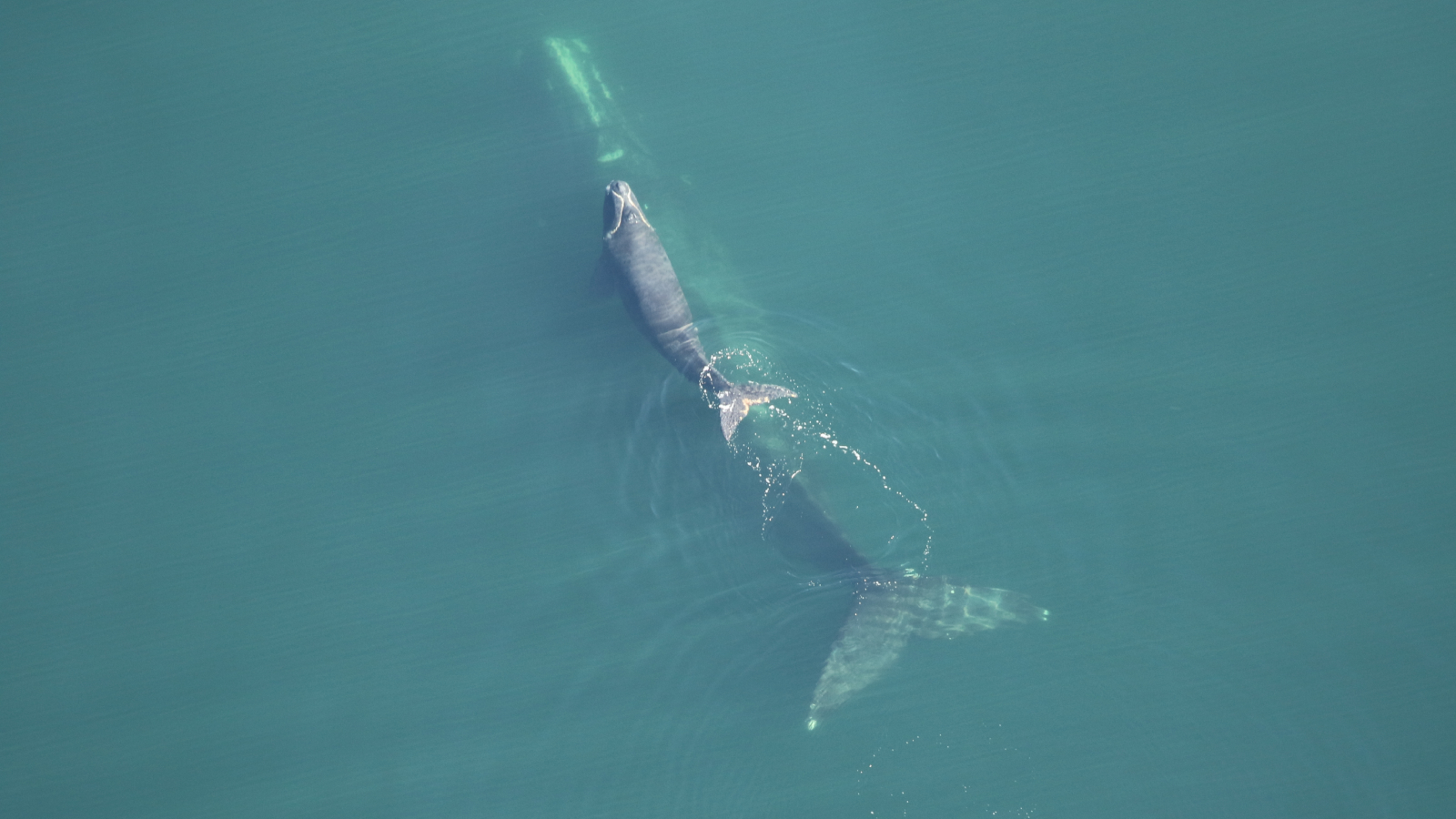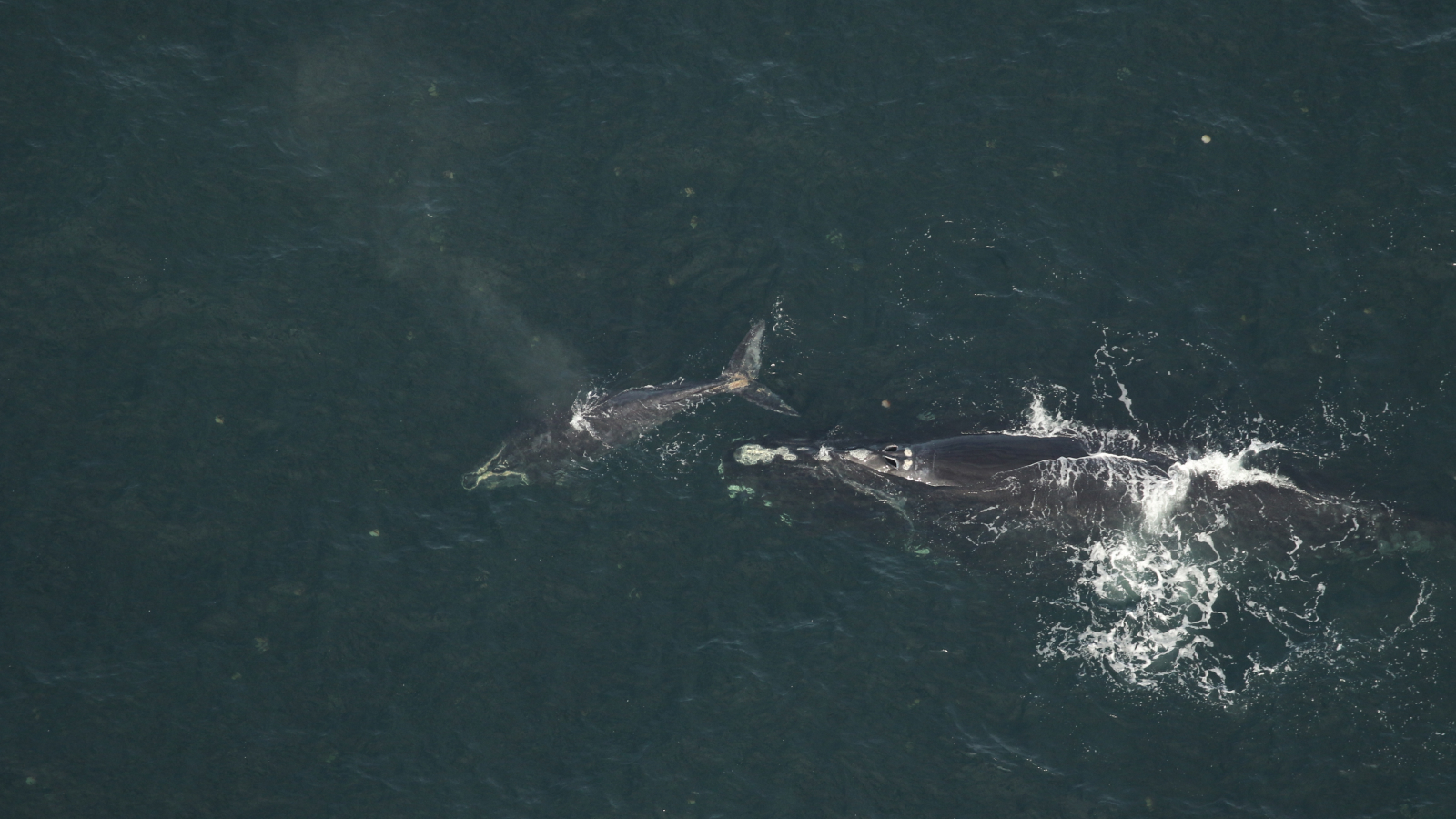Critically endangered right whales are shrinking, with drastic consequences for their population
Climate change appears to be causing North Atlantic right whales to get smaller, and it's making them have fewer babies.

Critically endangered North Atlantic right whales are getting smaller, which is impacting their ability to breed, scientists have discovered.
In a study published Wednesday (Jan. 28) in the journal Royal Society Open Science, researchers analyzed decades of data and found that smaller females had fewer babies.
"We provide strong evidence that the declining trend in right whale calving probability is associated with the decreasing body size of individuals in this population," lead author Enrico Pirotta, an ecologist at University of St Andrews, told Live Science. "This adds to previous evidence indicating that their health is also declining."
The researchers reviewed data from the North Atlantic right whale consortium collected between 1970 and 2020, including measurements taken using aerial photos. They used a statistical model to understand the relationship between a sexually mature female's length, health, survival, and ability to reproduce.
They found that the animal's length cubed — indicative of body volume — was the main factor influencing the likelihood of having calves, the odds of which decreased in smaller females. On average, a 46 foot (14 meter) female had a 56% probability of giving birth while a 36 foot (11 meter) female had just a 14% chance. Length has a much larger impact on the probability of calving than health or random variables .
Whales use stored reserves of organic substances called lipids to give them enough energy to reproduce. "Being smaller means that a female can accumulate less energy in absolute terms, which in turn could affect her ability to successfully breed," Pirotta said.
Sign up for the Live Science daily newsletter now
Get the world’s most fascinating discoveries delivered straight to your inbox.
North Atlantic right whales (Eubalaena glacialis) are the most endangered of all the species, which also includes North Pacific right whale (Eubalaena japonica) and Southern right whale (Eubalaena australis). The study focused on the critically endangered species because its vulnerability to human threats means effective protections are needed urgently — once decimated by whalers, there are just 356 individuals believed to be alive today.

North Atlantic right whales have been getting shorter since 1981, as a result of stressors such as climate change. While the mechanisms behind their decreasing sizes are unclear, it is thought to be linked to the reduced availability of nutrients. Size reductions in response to climate change have been documented in terrestrial and marine species, the authors wrote.
According to the National Oceanic and Atmospheric Administration (NOAA) 17 North Atlantic right whale calves have been born this season. To stop the species' decline, 50 or more would need to be born each year.
"For one of the most endangered large whales on the planet, every single North Atlantic right whale calf is vital to avoid extinction," Julia Singer, a marine scientist at the ocean conservation group Oceana who was not involved in the study, told Live Science.
"This year alone, the U.S. East Coast has become a graveyard for North Atlantic right whales after two young whales were struck by boats, another juvenile died from a painful entanglement in fishing gear, and two newborn calves are presumed dead after going missing," Singer said.
During calving season (November to April), vessel speed limits are put in place in the southeastern U.S., and ships must travel under 10 knots (around 11.5 miles per hour) to protect mothers and calves from boat strikes. Oceana is calling for the U.S. government to update the rules to include smaller vessels, which have also been known to hit right whales.
"This study shows the need for stronger protections to reduce the constant risks and stress North Atlantic right whales face every day from navigating a jungle of vertical fishing lines and speeding boats in their migration path," Singer said.

Melissa Hobson is a freelance writer who specializes in marine science, conservation and sustainability, and particularly loves writing about the bizarre behaviors of marine creatures. Melissa has worked for several marine conservation organizations where she soaked up their knowledge and passion for protecting the ocean. A certified Rescue Diver, she gets her scuba fix wherever possible but is too much of a wimp to dive in the UK these days so tends to stick to tropical waters. Her writing has also appeared in National Geographic, the Guardian, the Sunday Times, New Scientist, VICE and more.









